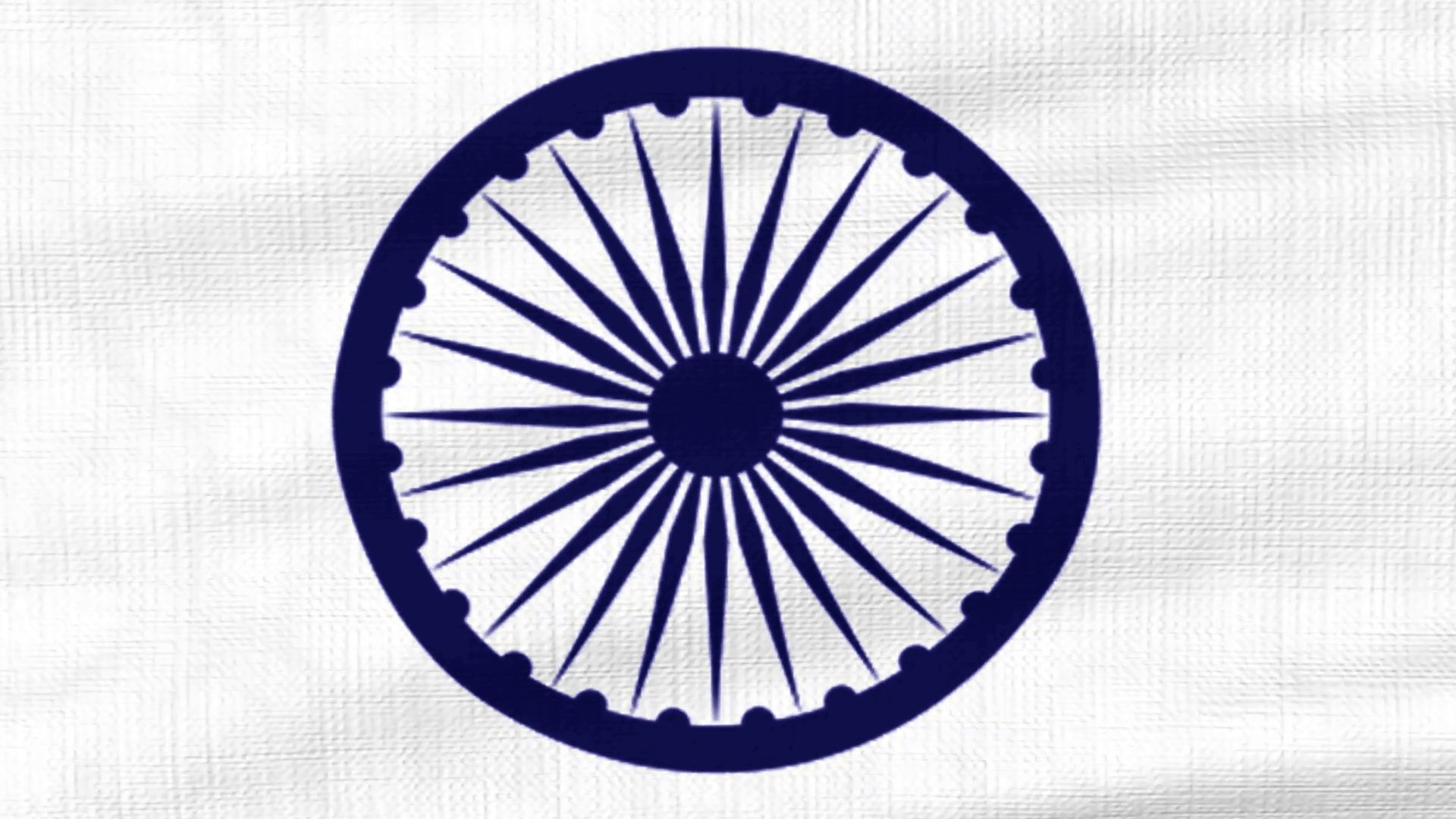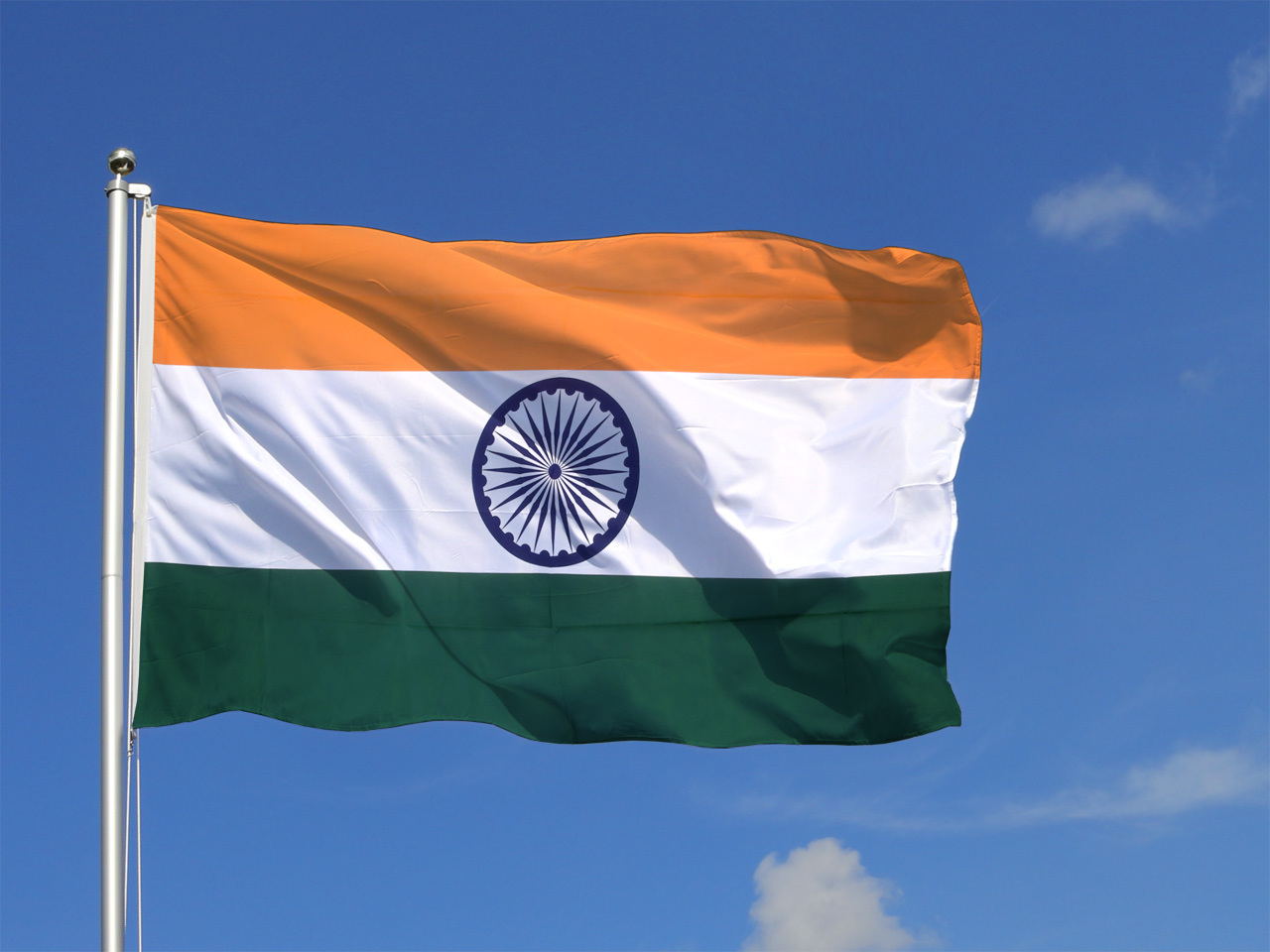Indian National Flag
Every free nation has its flag, symbolizing its freedom and identity. The National Flag of India, commonly referred to as the “tricolor,” was adopted in its present form during a meeting of the Constituent Assembly held on July 22, 1947, a few days before India gained independence from the British on August 15, 1947. It served as the national flag of the Dominion of India between August 15, 1947, and January 26, 1950, and thereafter as the national flag of the Republic of India.
The Indian national flag is a horizontal tricolor with deep saffron (kesari) at the top, white in the middle, and dark green at the bottom in equal proportions. The ratio of the width of the flag to its length is 2:3. In the center of the white band is a navy blue wheel, known as the Ashoka Chakra, which represents the chakra from the abacus of the Sarnath Lion Capital of Ashoka. The diameter of the chakra approximates the width of the white band and it has 24 spokes.
Colours of the Flag
– Saffron: The top band is saffron, symbolizing the strength and courage of the country.
– White: The middle band is white, indicating peace and truth, along with the Dharma Chakra.
– Green: The bottom band is green, representing the fertility, growth, and auspiciousness of the land.
The Ashoka Chakra
The Dharma Chakra in the center of the flag depicts the “wheel of the law” from the Sarnath Lion Capital made by the Mauryan Emperor Ashoka in the 3rd century BC. This chakra signifies that life is in movement and death is in stagnation.

Flag Code
On January 26, 2002, the Indian Flag Code was modified, allowing citizens to hoist the Indian flag over their homes, offices, and factories on any day, not just on national holidays. Indians can now proudly display the national flag anywhere and anytime, provided the provisions of the Flag Code are strictly followed to avoid any disrespect. The Flag Code of India, 2002, is divided into three parts:
1. Part I: General description of the National Flag.
2. Part II: Display of the National Flag by members of the public, private organizations, educational institutions, etc.
3. Part III: Display of the National Flag by Central and State governments and their organizations and agencies.
Evolution of the Flag

– 1906: The first flag of India was hoisted in Parsee Bagan Square, Calcutta, during the Swadeshi and Boycott struggle.
– 1907: Madam Bhikaji Cama raised a similar flag in Paris, which was later exhibited in Berlin at a socialist conference and became known as the Berlin Committee Flag.
– 1917: As part of the Home Rule Movement, Annie Besant and Bal Gangadhar Tilak hoisted another flag symbolizing autonomous rule for Indians within the Colonial Empire.
– 1921: At the Bezwada (now Vijayawada) session of Congress, Pingali Venkaiah presented a design to Mahatma Gandhi, featuring three stripes representing multiple communities living in harmony with a spinning wheel in the center.
– 1931: A formal resolution was passed adopting Pingali Venkaiah’s flag with a modification: red was replaced by saffron, with white and green stripes remaining, representing courage, peace, and fertility, respectively.
– 1947: The Constituent Assembly formally adopted the flag of free India. The spinning wheel was replaced by the Ashoka Chakra, symbolizing truth and life.
The Indian Tricolor embodies the nation’s history, values, and aspirations, telling the story of India’s freedom struggle and its enduring spirit.




